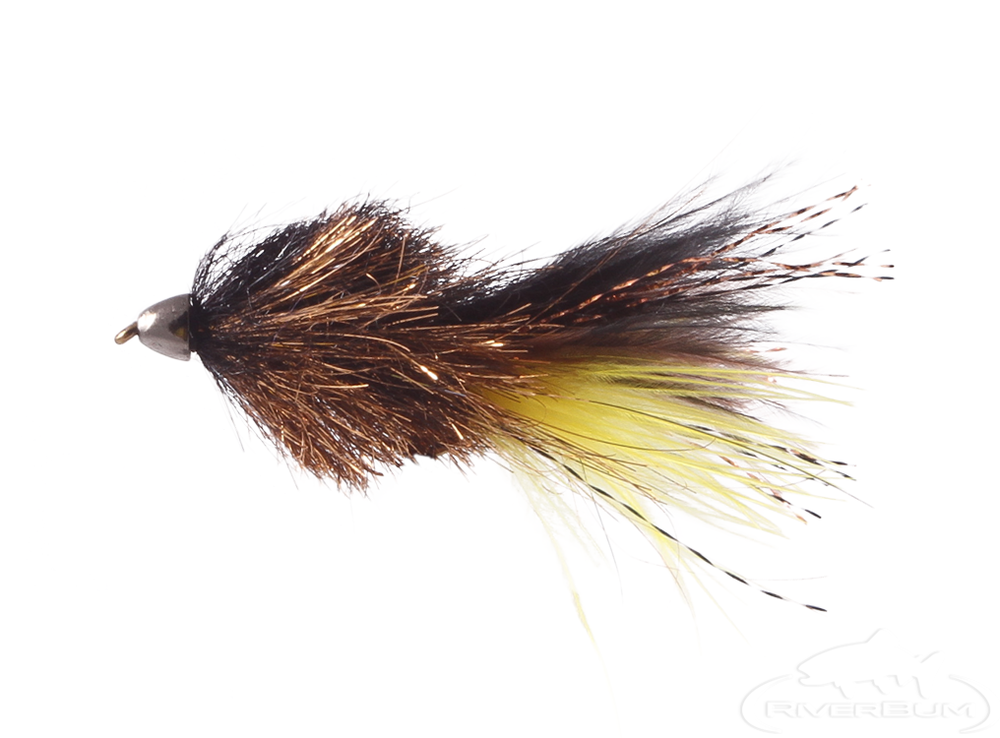Big, Bad, German Brown
RiverBum has greatly expanded our streamer offering. We have hundreds of new fly fishing patterns in, including some big boys and articulated streamers. When you fish these bad boys, you’re not going for volume of fish. You’re going for the King of the river. The biggest, baddest trout in the water.
Want to improve your chances of hooking up? Here are a few hints.
Sculpin Patterns
Trout love to feed on sculpin.
If you’re going to catch trout on a sculpin pattern, you have to fish it correctly. Sculpin are bottom dwellers. They don’t move up in the water column. They blend in with the bottom and scuttle about directly on the bottom.
You don’t want to cast this fly up and across and swing it. There are two ways to fish this fly. One is to cast it directly downstream and let it sink. Strip retrieve in small, SLOW, random intervals. For a beginner, this can be the way to go.
I much prefer and upstream cast. This can take some getting used. First you need to let the fly hit bottom. Secondly, you need to let the fly “swim” downstream on the bottom. Your retrieve is simply keeping up with the fly so you can feel it. The takes on this fishing method can be very subtle. If you feel a tick, set the hook and hold on!
My three favorite patterns are below.
Boulder Gardens
I love fishing pocket water. I’ll be doing a write up on fly fishing these waters later, but to the point of this write up, chucking big streamers can be very productive in these waters.
In fishing typical pocket water, you’re casts are very short. You’re normally working within a 15 foot radius or less. The water is swift, active and oxygenated. This leads to strong and healthy trout. Scrap the big ole double haul. All you’re going to do is spook fish. Stealth is the key here. Trout can be real aggressive in these scenarios. They don’t have a lot of time to see their next meal. Many times, it’s a reaction strike.
Flick your streamer into the most fishy spots like the inside seam behind a large bolder. Give the streamer a few twitches with your rod hand. That’s it. You’re imitating a baitfish.
The other key here is move on. If you don’t catch a fish in a few casts, go to the next spot. This isn’t working a deep pool. Don’t waste your time. I like cousin it's, skully buggers, candyman's, and sparkle minnows in these situations. They've got to be weighted. I also down use sink tip line. I use my normal floating line with a 9' leader.
Cut Banks
It’s no secret that big brown trout love holding tight to deep cut banks. The challenge is fishing them correctly.
You want to be about 20-30 off the bank if possible. I like to cast ever so slightly upstream, say the 11:00 position. Combining your double haul with a reach upstream is ideal. If you can’t get that down effectively, no worries. Do a couple aggressive upstream mends as soon as the fly hits the water. Once the fly sinks, give a couple of quick strips upstream, then let the fly swing.
What you’re trying to mimic here is a baitfish taking a few quick darts upstream then turning to swim downstream to get out of harm’s way. Many times you’ll get smacked right at the turn or soon thereafter. You want to approach the stream similar to how steelheaders do. A few casts, then move about 10-20 downstream. A few more, then shuffle down. I love using Mr. Creepo's, Skully Buggers, and Candyman's.
You want to catch the big boys, this is how you do it.
While it is true you can catch big fish on small flies, you’re not going to catch any piddlers fishing these big streamers. This fly fishing technique is going to produce quality fish. You’re not fishing to catch 25 fish in a day and hope you catch a couple over 15 inches. You’re fishing hard and looking for a half dozen or so monsters, more if you’re lucky, but you need to have realistic expectations too. You can now target bull trout in Idaho.
I’m heading out this weekend, and this is exactly how you do it.
Tight Lines and Screaming Drags
















